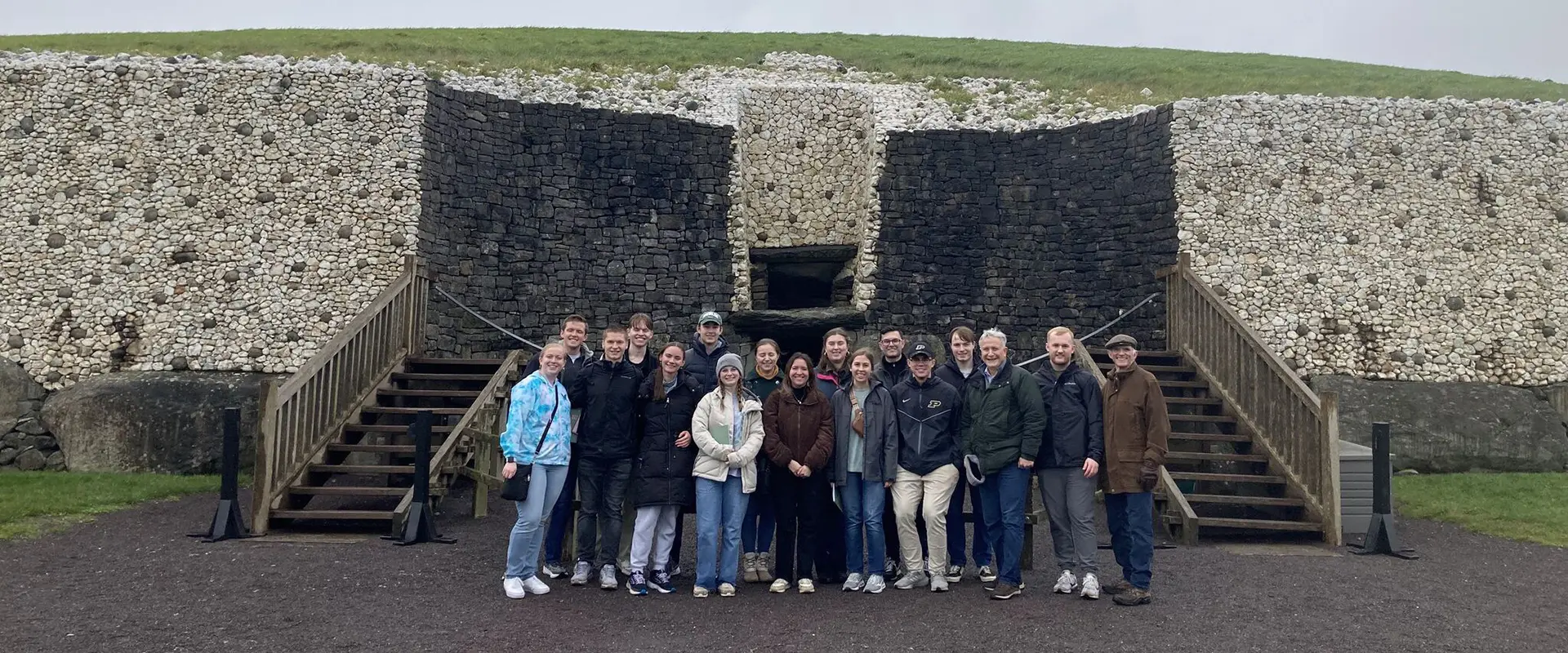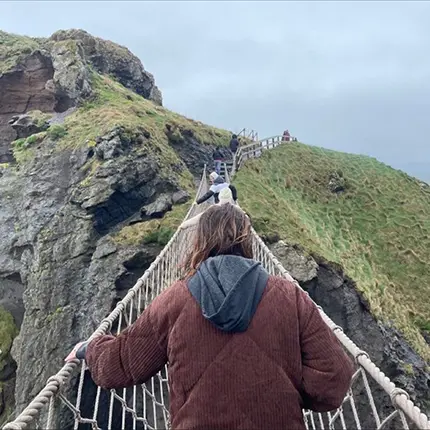
While some college students headed to the beach for spring break, a group of 15 undergraduates from Purdue University’s Mitchell E. Daniels, Jr. School of Business traveled to Ireland for the “Belfast Titanic Experience,” a two-credit, immersion-learning course focused on leadership, decision-making, change management, and story crafting.
The students are members of the Larsen Leaders Academy (LLA), whose mission is to help the Daniels School’s top undergraduates translate their academic experiences into real-world leadership skills through coursework, extracurriculars, case competitions, domestic and international travel, internships and more.
The group was led by Patrick Mosher, executive-in-residence and interim chief of staff at the Daniels School, Professor Brad Alge, academic director of the LLA, and academy director Steve Shelby.
Students developed their skills as leaders through a combination of on-site lectures and experiential learning. Sessions addressed leading organizations and performing in a rapidly changing, stressful environment with limited information and limited resources — challenges that were present aboard the Titanic in 1912 and ubiquitous in organizations today. Attendees were also assigned pre-readings and completed daily introspections during the course, as well as a post-experience writing assignment.
“We learned about leadership by examining decisions made by leaders in their historical context,” Mosher says. “Imagine studying from the very place where the Titanic was designed, across the street from the slip in the Belfast shipyard where the Titanic was built. We also stayed in the Belfast Titanic Hotel, which was converted from the headquarters of Harland and Wolf, the company that launched the Titanic.”
In addition to studying the 10 decisions that took the Titanic down, students visited the Newgrange World Heritage Site — a structure built in 3500 B.C. that pre-dates both Stonehenge and the Great Pyramids of Giza — where they studied inspiration, motivation, and innovation.
Students also took the Belfast Mural tour, which showcases building murals that tell two sides of the Irish troubles, a conflict between the Loyalists and Nationalists that lasted from the late 1960s to 1998. “Every story has two or more sides that bear telling,” Mosher says. “Students had a first-hand experience of how complicated these social issues are and how similar challenges face organizations today.”
The following day, students traversed the historic Carrick-A-Rede rope bridge for an “in body” experience of going from Point A to Point B. “It was a lesson in conquering fear, meeting challenges, and managing a team,” Mosher says.
Kyle Emgenbroich, a Daniels School sophomore majoring in business analytics and information management, says one of his main takeaways from the experience was to embrace his uniqueness.

“The week brought a profound realization — each of us possesses a distinct leadership style, a unique blend of strengths waiting to be unleashed,” he says. “Through introspection and engaging group discussions, we not only identified our individual strengths but also crafted personalized brand definitions. For me, I discovered that my leadership essence lies in being an organic force, connecting with others authentically to propel us toward shared goals.”
Indeed, while the learning context was unique, the outcomes were tailored to business. “This was not a course in ancient Irish lore, shipbuilding, or politics,” Alge says. “Rather, this course focused squarely on leadership, decision-making, change management, and the influence of effective story crafting.”
“Being onsite where impactful decisions were made amplifies the importance of those learning outcomes,” adds Shelby. “It provides our students with unique experiences to develop both their personal and professional skills.”
The opportunity came at a reduced cost to LLA students, whose trips were partially funded by gifts from the academy’s namesakes, Marshall and Susan Larsen. Thanks to their generosity, students have the opportunity to participate in other immersion trips each year, including visiting Gettysburg to experience how leadership can transform teams and organizations, the Kennedy Space Center at NASA to study risk and decision-making, Yosemite National Park to experience leadership vulnerability, and the European Theatre during WWII to learn humility, humanity and resolve.
Although the destinations may change, each trip shares a common goal and begins with a simple exercise. Students taking part form a circle, introduce themselves, and share a personal message with the others: “You can count on me.”
“It’s a form of public commitment that sets the tone for the experience. They look each other in the eye and reinforce that we’re all in this together,” Alge says. “We want our students to find a purpose with passion and are constantly challenging them to find their ‘why’ to lead the way.”